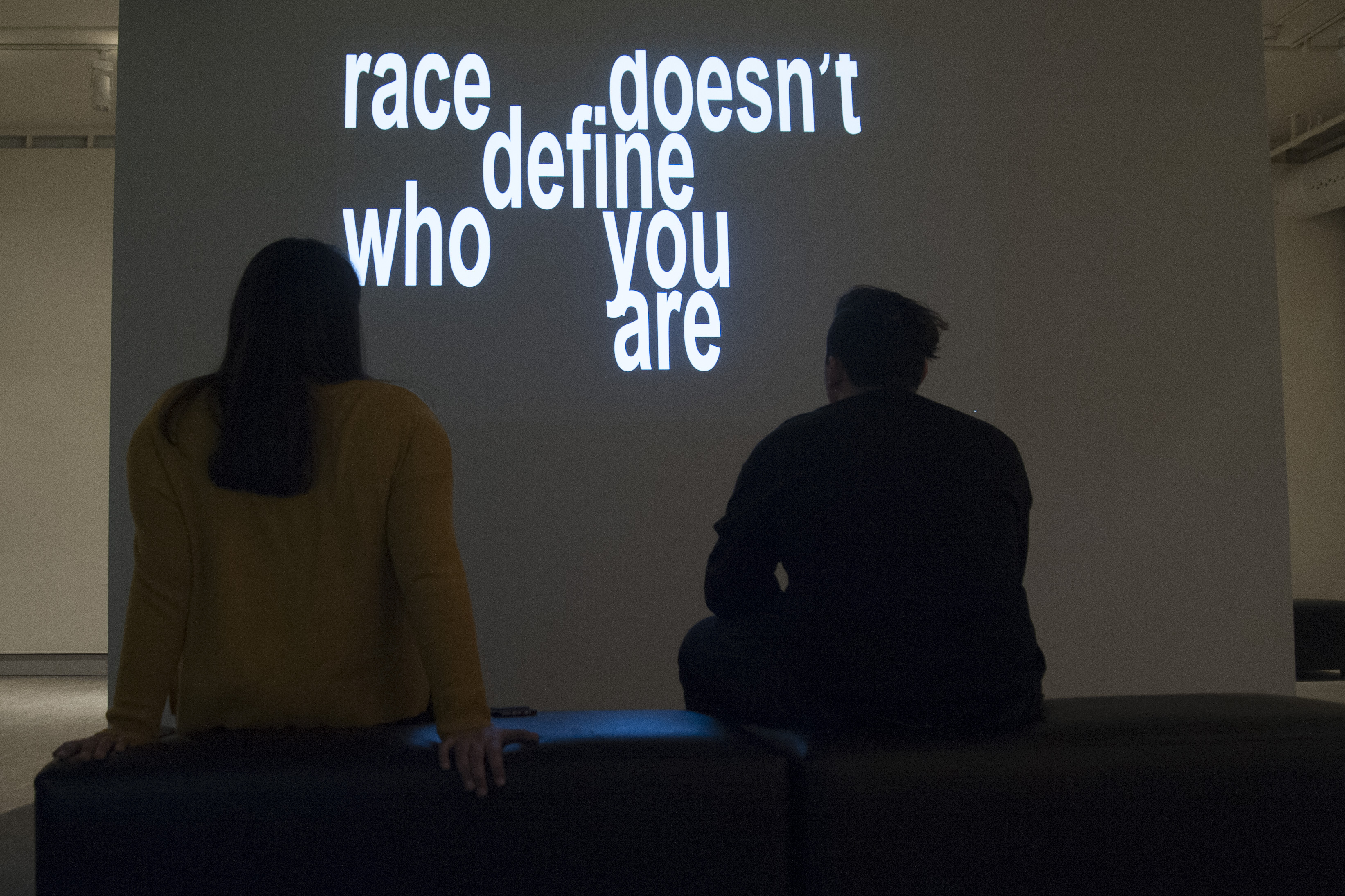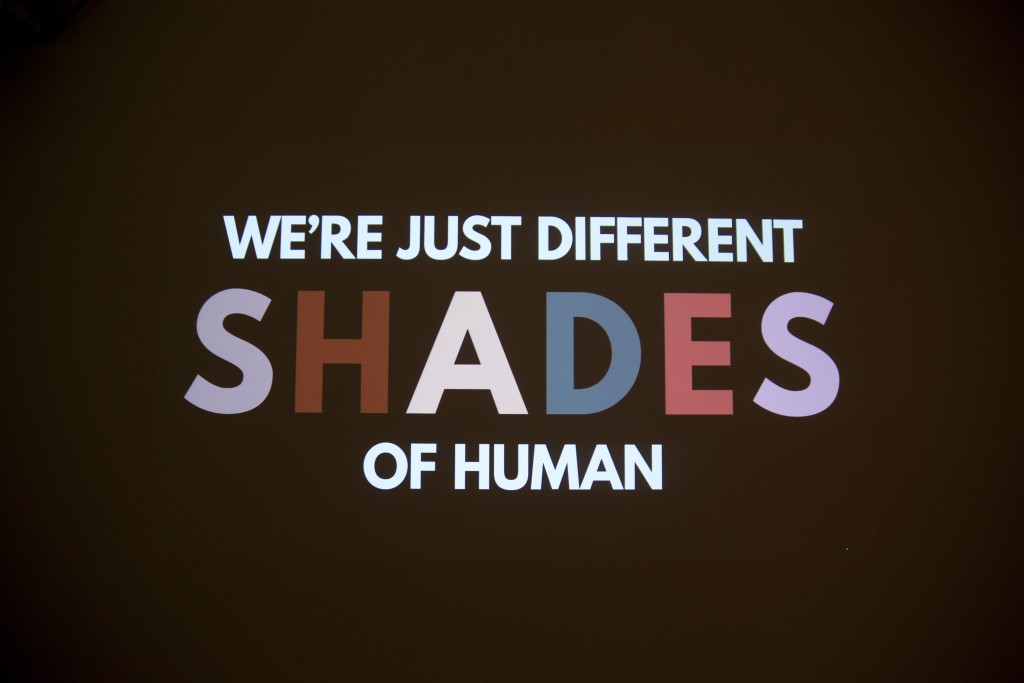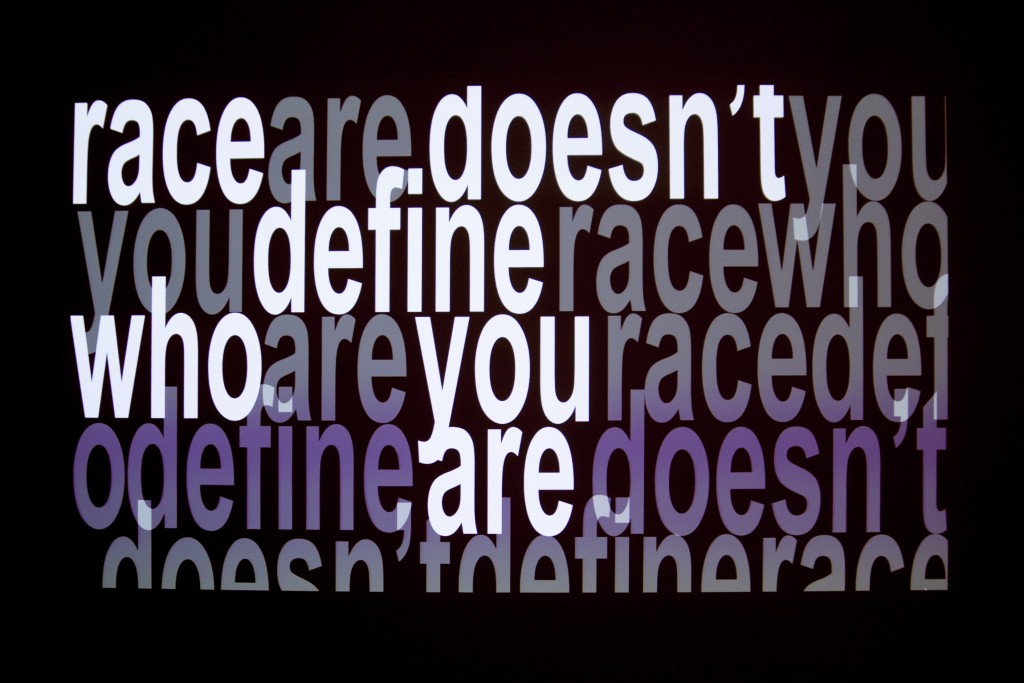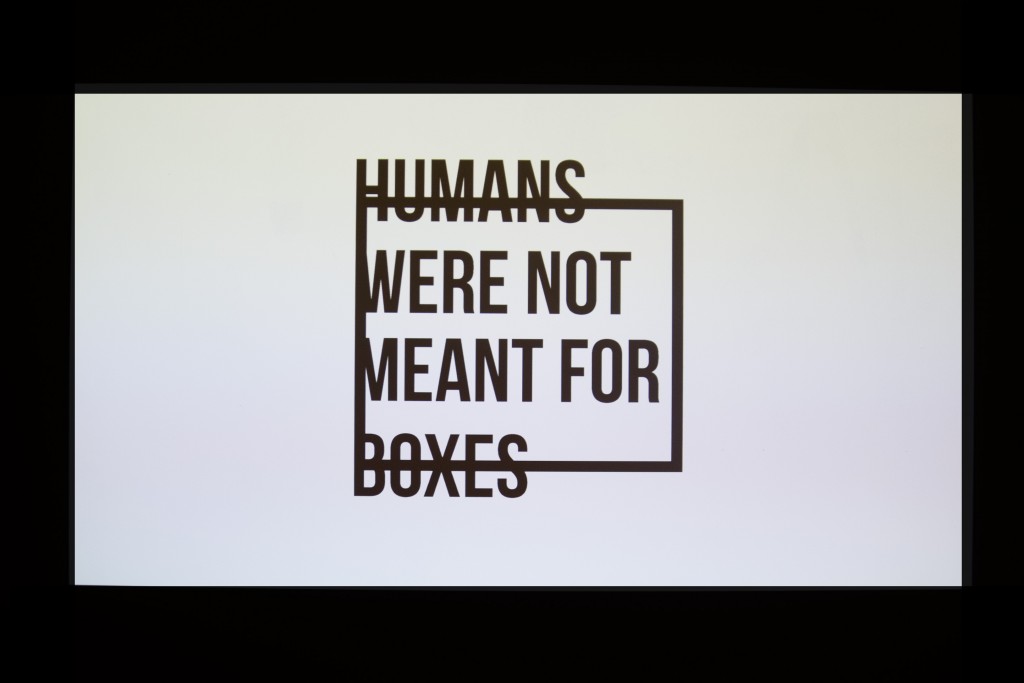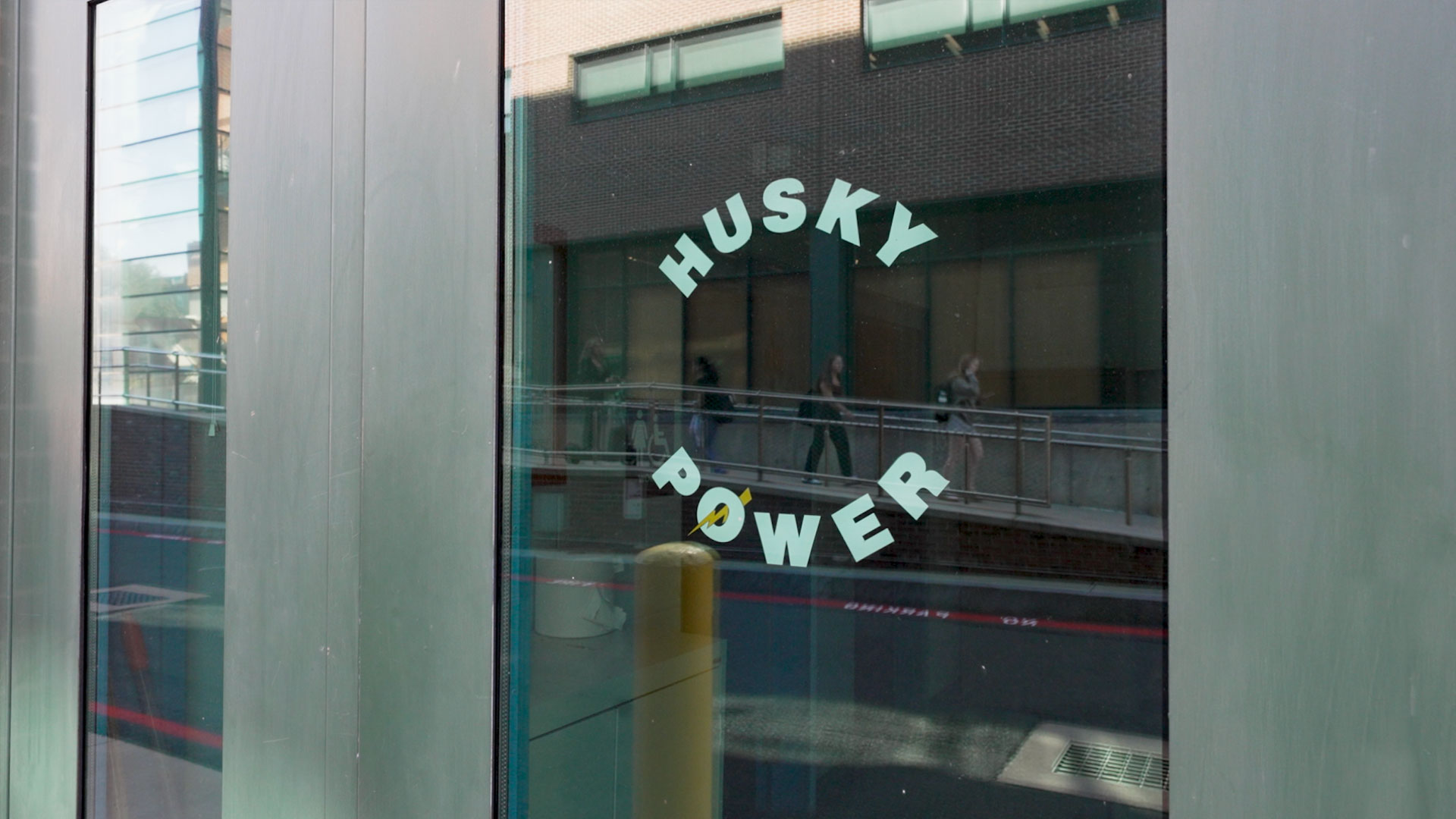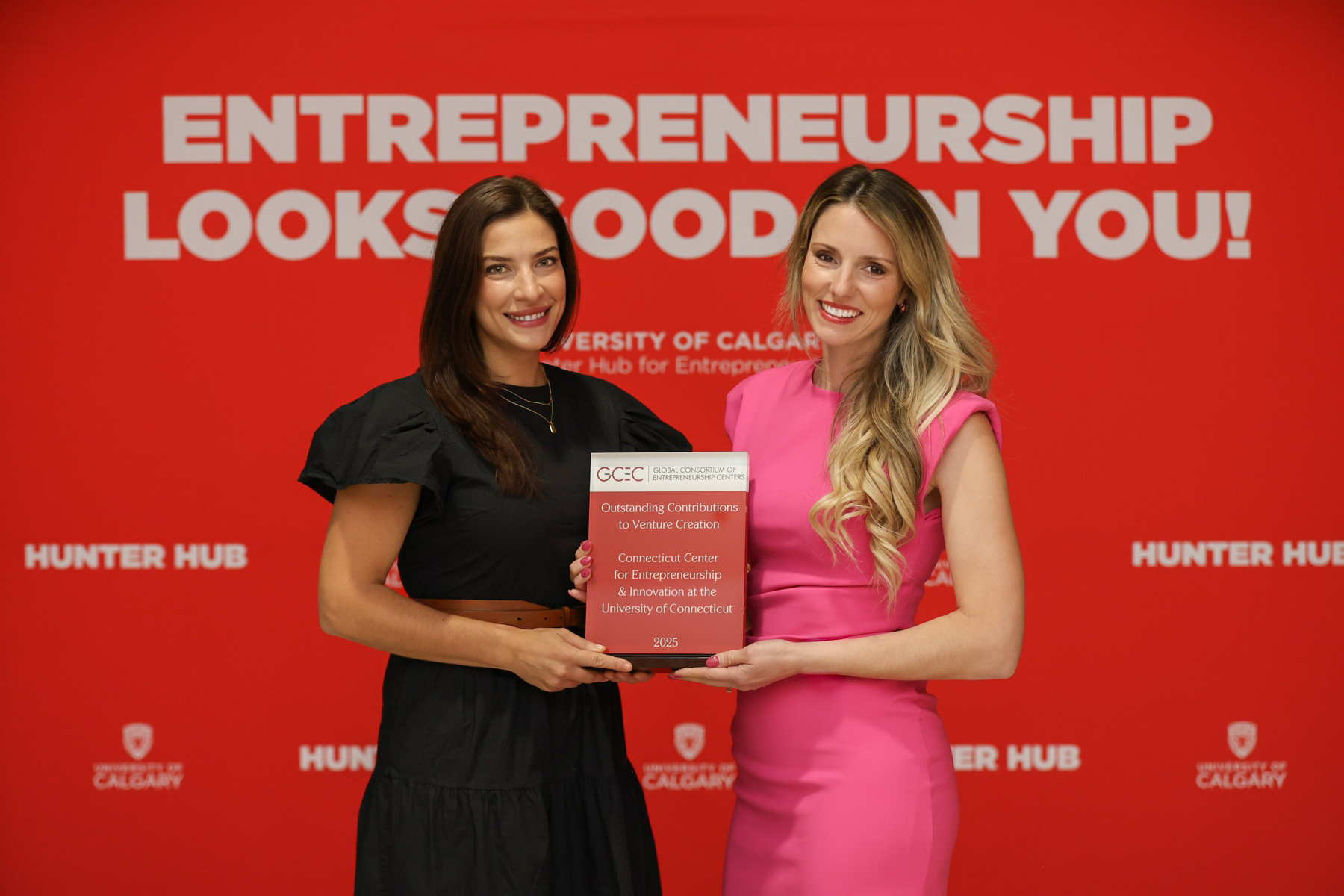With 82 percent of adults aged 18-29 using Facebook and a doubling of Pinterest and Instagram usage since 2012 according to the Pew Research Center, it is not surprising that Millennial college students want to share information using a variety of media, including art in a museum.
This is reflected in the interactive exhibition at the William Benton Museum of Art “IN-DIFFERENCE: Reflections on Race,” which was designed by students in the School of Fine Arts as a collaborative classroom response to the 2015- 2016 UConn Reads theme of “Race in America.” The exhibit continues through March 13.
Last fall, students in the departments of Art and Art History and Digital Media and Design created the exhibition taking inspiration from “The Race Card Project,” which was developed by journalist Michele Norris, a former NPR news reporter and host of “All Things Considered.”
“The Race Card Project” asks people to think about the word race and distill their thoughts, experiences, or observations about race into just six words. For the Benton exhibition, students in graphic design and digital media classes used typography, color, and motion to visually communicate their six-word designs projected on a screen.
Among the six word statements in the motion projection are:
- “HUMANS WERE NOT MEANT FOR BOXES”
- “WE’RE JUST DIFFERENT SHADES OF HUMAN”
- “BUT WHERE ARE YOU REALLY FROM?”
- “RACE DOESN’T DEFINE WHO YOU ARE”
- “MY COLOR IS FROM THE SUN”
- “OUR DYING PLANET DOES NOT DISCRIMINATE”
- “THE WORLD LOOKS BETTER IN COLOR”
A series of seven statements, some longer than six words, are projected opposite the moving images in a display that encourages museum visitors to post one of three stickers over each statement: agree (blue), disagree (red), or neutral (yellow):
- “Race is not a barrier to accomplishments.”
- “I was raised in a family that talked about race.”
- “I believe everyone should be treated as equals.”
- “Having a Black president shows that minorities have the same opportunities as whites.”
- “I believe that government pays too much attention to the problems of racial minority groups.”
- “I believe we should talk more openly about bias.”
- “Racial preferences are unfair regardless of historical inequalities.”
“When you go into that room, it’s a personal environment,” says Jose Angel Ortiz Jr. ’18 (SFA), a graphic design major and member of the team that designed the exhibition. “It’s asking you to interact with the wall that’s asking questions that you may not be comfortable with. We looked at articles that revealed some interesting information about our cognitive experience in regards to race. From the outside perspective, we look at it as colorblind. When you go back there, if you see a lot of yellow circles you will see a lot of colorblindness. I’m interested in seeing how this plays out.”
The graphic design classes were led by Mary Banas ’03 (SFA), visiting assistant professor of graphic design, and Edvin Yegir, associate professor of graphic design. The motion graphics class was led by Anna Lindemann, an adjunct professor of digital media and design.
“We wanted to give the students the opportunity to be honest with a subject that could be tricky,” says Banas. “We had a lot of conversations and did a lot of research to create a space conducive to dialogue. We spent a lot of time on the interactive portion, reworking it as to what is the most effective way of engaging with the audience.”
Lindemann says that in addition to the challenge of working with subject matter that is “weighty,” there was the collaboration among classes that are generally focused on their own work.
“Often a class is within the class,” says Lindemann, whose students worked on projects that interfaced with Banas’s class and the museum. “It was exciting to extend beyond that.”
Adds Anne D’Alleva, dean of the School of Fine Arts and a former chair of UConn Reads: “What you see in the gallery is really provocative, something that makes the viewer think and respond. That is so much the framework for communication with Millennials, as we’ve seen with student protests and other initiatives around the country. Some of that mentality has been brought into the museum.”
The 2016 UConn Reads book is The New Jim Crow: Mass Incarceration in the Age of Colorblindness by Michelle Alexander. In addition to the IN-DIFFERENCE exhibition at the Benton, a series of UConn Reads events and activities will take place during the remainder of the spring semester. For more information go to the UConn Reads website.
“IN-DIFFERENCE: Reflections on Race” continues at the William Benton Museum of Art, 245 Glenbrook Road, Storrs, through March 13. Also at the museum is “Stark Imagery: The Male Nude in Art,” also through March 13. For more information go to the Benton website.
